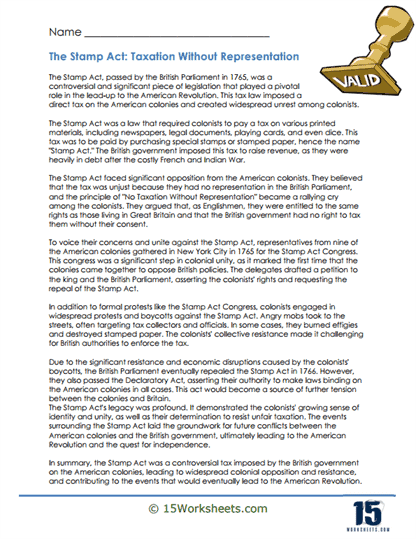The Stamp Act

Worksheet Description
The worksheet presents an informative text on the Stamp Act of 1765, a pivotal piece of legislation that inflamed colonial resistance and contributed to the American Revolution. It explains the nature of the act, the requirement it placed on various printed materials to carry a tax stamp, and the colonists’ reaction to what they perceived as taxation without representation. The document also outlines the significant opposition in colonies like New York, the formation of the Stamp Act Congress, and the broader economic and political ramifications of the act’s imposition and eventual repeal.
This worksheet aims to teach students about the Stamp Act’s role in escalating tensions between the American colonies and the British government. It highlights the concept of “no taxation without representation” as a core grievance that motivated colonial opposition. Students learn about the collective colonial response, such as the Stamp Act Congress, and the act’s significance in the development of American political identity and unity. The text also offers insight into the strategies of colonial resistance and the connection between economic policies and revolutionary sentiment.
